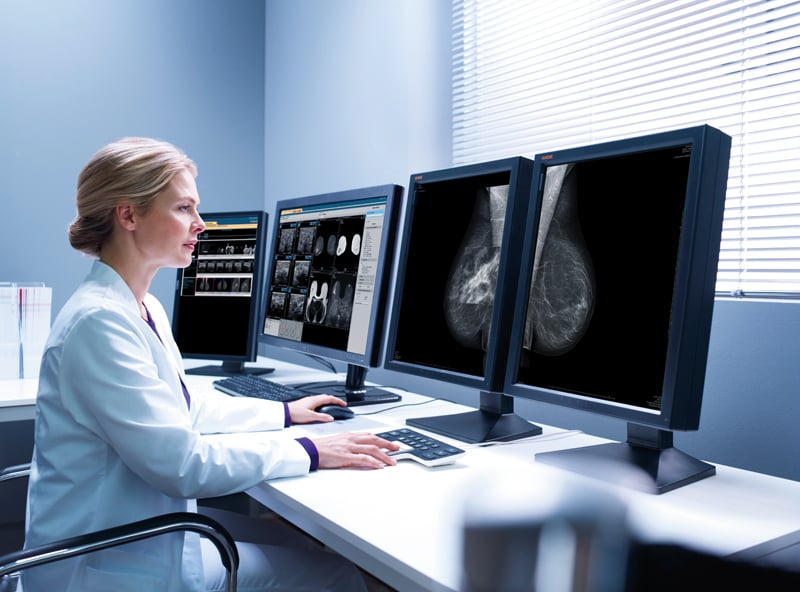
July 30, 2014 — The addition of tomosynthesis, a 3-D breast imaging technique, to digital mammography in more than 170,000 examinations was associated with a decrease in the proportion of patients called back for additional imaging and an increase in the cancer detection rate, according to a study in the June 25, 2014, issue of JAMA. TOPS Comprehensive Breast Center in Houston was part of the study conducted by medical director Stephen L. Rose, M.D., and colleagues.
Screening mammography has played a key role in reducing breast cancer mortality, although it has drawn criticism for excessive false-positive results, limited sensitivity and the potential of over-diagnosis of clinically insignificant lesions. In 2011, tomosynthesis was approved by the U.S. Food and Drug Administration (FDA) to be used in combination with standard digital mammography for breast cancer screening. Single-institution studies have shown that adding tomosynthesis to mammography increases cancer detection and reduces false-positive results, according to background information in the article.
The study utilized data from 13 centers to determine if mammography combined with tomosynthesis improves performance of breast screening programs. A total of 454,850 examinations were evaluated. Researchers compared screening digital mammography alone (281,187 cases) against the performance after tomosynthesis was added to mammography (173,663 cases) at 13 sites in geographically diverse regions across the United States.
The primary measured outcomes were recall rate, cancer detection rate, positive predictive value for recall and positive predictive value for biopsy. An analysis of the data indicated the model-adjusted rates per 1,000 screens were as follows: for recall rate, 107 with digital mammography vs. 91 with digital mammography + tomosynthesis (an overall decrease in recall rate of 16 per 1,000 screens); for biopsies, 18.1 with digital mammography vs. 19.3 with digital mammography + tomosynthesis; for cancer detection, 4.2 with digital mammography vs. 5.4 with digital mammography + tomosynthesis; and for invasive cancer detection, 2.9 with digital mammography vs. 4.1 with digital mammography + tomosynthesis.
Adding tomosynthesis increased the positive predictive value for recall from 4.3 percent to 6.4 percent and for biopsy from 24.2 percent to 29.2 percent.
“This study should put to rest much of the current confusion over the benefits of mammography. With this new technology, tomosynthesis (3-D mammography), we can significantly reduce the patient anxiety generated by recalls for additional imaging. Simultaneously, the new technology will increase the accuracy of traditional digital mammography in the early detection of invasive tumors,” said Rose.
Rose and Andra Tidwell, BSRT, imaging director of TOPS Comprehensive Breast Center, also published a study last year in the American Journal of Radiology comparing 3-D screening with the prior year’s standard digital mammography. The study actually demonstrated a 37 percent reduction in recalls and more than a 50 percent increase in the early detection of invasive tumors. “I truly believe that as experience grows with 3-D mammography, we will see the recall rates continue to drop, and we will detect tumors earlier when less treatment is required. This is a very exciting study for all women undergoing screening mammography,” said Rose.
For more information: www.jamanetwork.com


 April 17, 2024
April 17, 2024 








